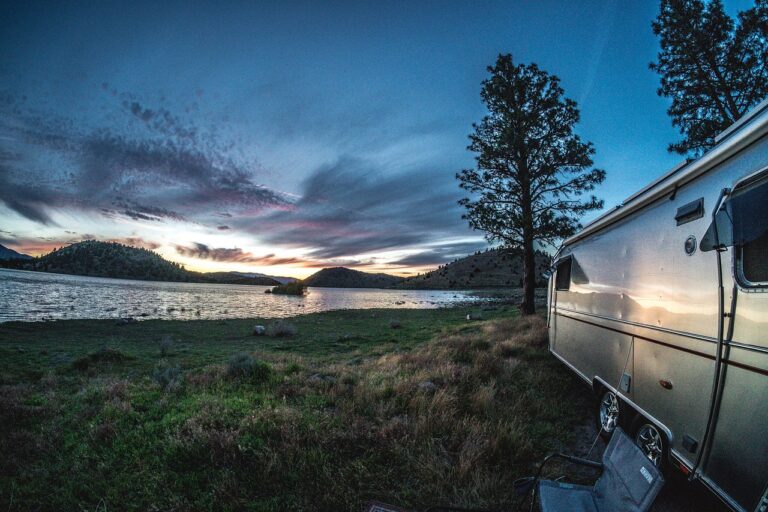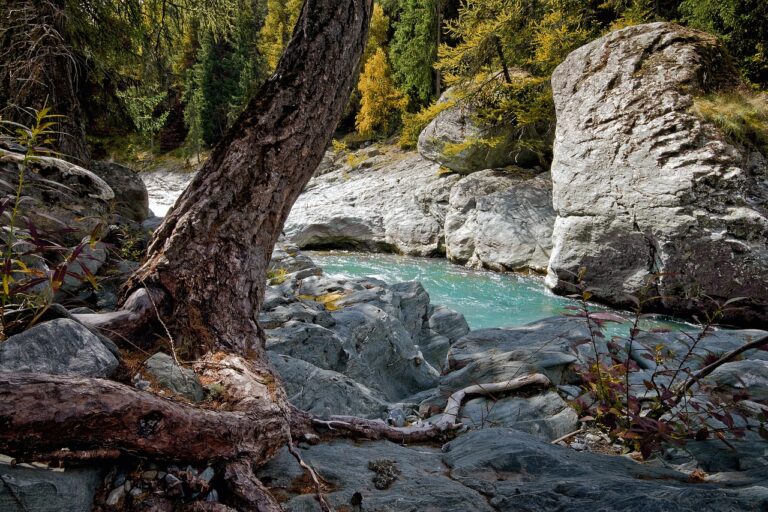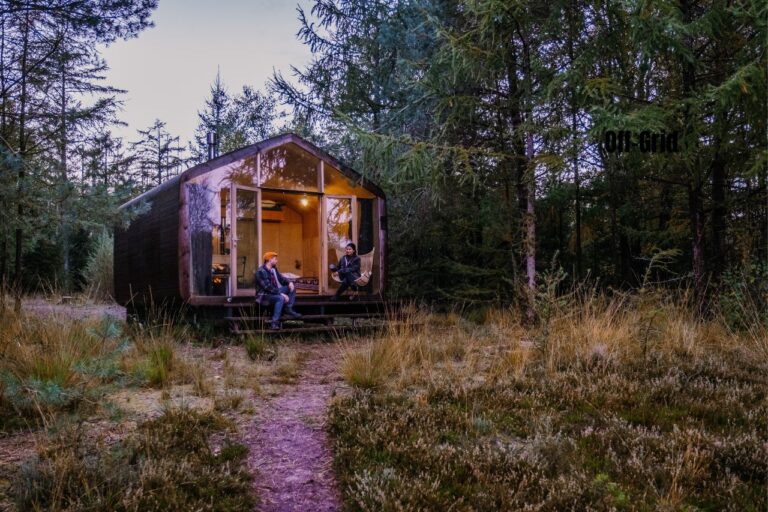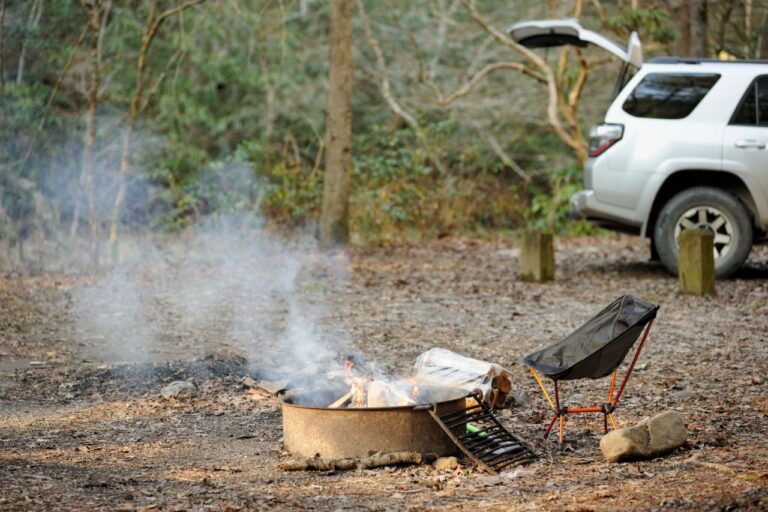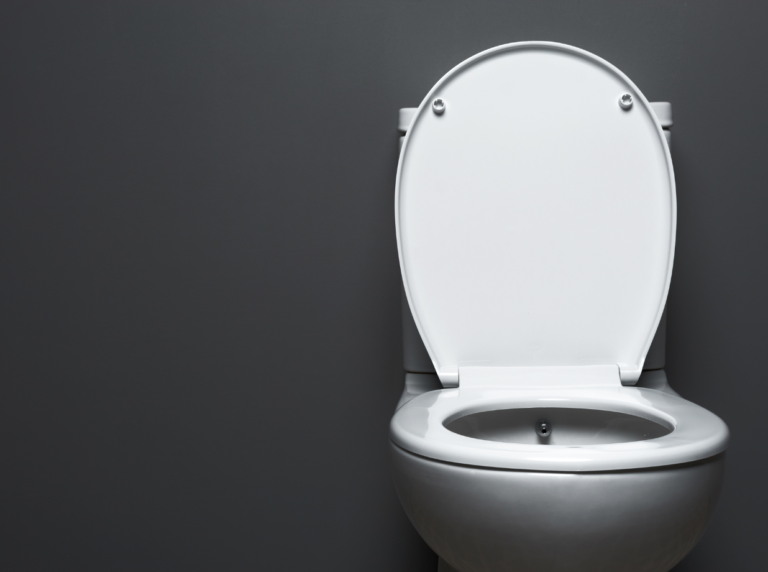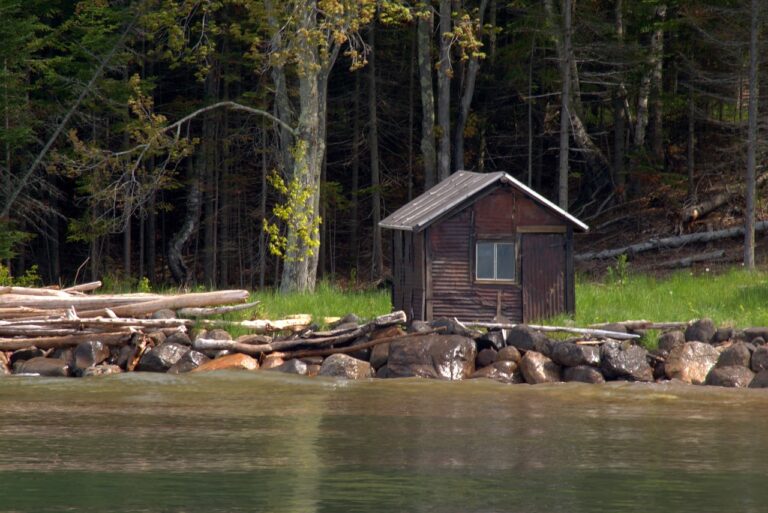The Benefits of Using a Water Filter While Backpacking
Backpacking in nature is exhilarating, but staying hydrated is vital. A water filter is your reliable solution, providing clean drinking water from freshwater sources, and lightening your load. Learn more about its benefits in this article and embark on your backpacking adventure fully prepared for hydration and bliss.
The Importance of Staying Hydrated While Backpacking
When you’re out exploring the wilderness, it’s easy to get caught up in the excitement and forget to prioritize your hydration. However, staying hydrated is essential for maintaining your energy levels, regulating your body temperature, and preventing dehydration. This is especially true when you’re exerting yourself through activities like hiking or climbing. Without enough water, your performance can suffer, and you may even put yourself at risk of heat exhaustion or heat stroke.
Drinking enough water is crucial, but it’s equally important to ensure that the water you consume is safe and free from harmful bacteria, viruses, and parasites. In the wilderness, natural water sources like rivers, streams, and lakes may appear pristine, but they can be contaminated with various microorganisms that can cause waterborne illnesses. This is where a water filter becomes an indispensable tool for backpackers.
A water filter allows you to transform potentially contaminated water into safe drinking water by removing harmful pathogens and impurities. It acts as a barrier, preventing bacteria, protozoa, and other microorganisms from entering your body. By investing in a high-quality water filter, you can quench your thirst with confidence, knowing that you’re protecting your health while enjoying the beauty of nature.
The Dangers of Drinking Untreated Water in the Wilderness
Drinking untreated water in the wilderness can have serious consequences for your health. Natural water sources may contain harmful microorganisms, such as Giardia, Cryptosporidium, and E. coli, which can cause gastrointestinal illnesses like diarrhea, vomiting, and stomach cramps. These illnesses can quickly ruin your backpacking trip and leave you feeling miserable.
In addition to bacteria and parasites, natural water sources can also contain chemical pollutants, such as pesticides, heavy metals, and industrial waste. Consuming water contaminated with these substances can lead to long-term health issues, including organ damage and even cancer. Therefore, it’s crucial to take precautions and ensure that the water you drink while backpacking is safe.
What is a Water Filter and How Does it Work?
A water filter is a device designed to remove impurities and contaminants from water, making it safe for consumption. It works by utilizing various filtration methods to trap and eliminate harmful substances, including bacteria, protozoa, viruses, and sediment. The exact mechanisms employed by water filters can vary depending on the type and model, but the goal remains the same – to provide you with clean and safe drinking water.
One of the most common types of water filters used in backpacking is the microfiltration filter. These filters consist of microscopic pores that physically block the passage of contaminants, ensuring that only clean water flows through. Some filters also incorporate activated carbon, which helps remove chemicals, odors, and unpleasant tastes from the water.
Water filters typically come in the form of compact and lightweight devices that are easy to carry in your backpack. They are designed to be user-friendly, allowing you to quickly and efficiently filter water from natural sources, such as rivers, streams, or even stagnant ponds. With a water filter by your side, you can confidently explore the wilderness, knowing that you have a reliable source of safe drinking water.
Benefits of Using a Water Filter While Backpacking
Using a water filter while backpacking offers a multitude of benefits that go beyond just ensuring your hydration needs are met. Let’s take a closer look at some of the advantages of incorporating a water filter into your backpacking gear:
1. Convenience: Carrying enough water to last your entire backpacking trip can be challenging and add unnecessary weight to your pack. With a water filter, you can refill your water bottle from any freshwater source, eliminating the need to carry large quantities of water. This not only lightens your load but also provides you with the freedom to explore without worrying about running out of water.
2. Cost-effective: Purchasing bottled water for your backpacking trip can quickly become expensive, especially if you’re planning an extended adventure. Investing in a water filter allows you to save money in the long run by relying on natural water sources instead of buying bottled water. Furthermore, it reduces your environmental footprint by eliminating the need for single-use plastic bottles.
3. Sustainable: Backpacking is all about connecting with nature and minimizing your impact on the environment. By using a water filter, you reduce the need for disposable water bottles, helping to protect the natural beauty of the wilderness. It’s a small but significant step towards practicing responsible and sustainable outdoor recreation.
4. Versatility: Water filters are designed to be versatile and adaptable to various outdoor conditions. Whether you’re backpacking in the mountains, trekking through the desert, or exploring dense forests, a water filter can provide you with a reliable source of clean drinking water. This versatility makes it an essential tool for backpackers who venture into different environments.
5. Health and Safety: The primary purpose of a water filter is to ensure your health and safety by removing harmful pathogens and impurities from water. By using a water filter, you significantly reduce the risk of contracting waterborne illnesses, allowing you to enjoy your backpacking trip without the worry of falling ill.
These are just a few of the many benefits of using a water filter while backpacking. With the convenience, cost-effectiveness, sustainability, versatility, and health advantages it offers, it’s clear why a water filter is an essential piece of gear for any backpacker.
Different Types of Water Filters for Backpacking
When it comes to choosing a water filter for your backpacking trip, you’ll find a wide range of options available on the market. Each type of water filter has its own unique features and advantages, so it’s important to select one that best suits your needs and preferences. Here are some of the most common types of water filters used by backpackers:
1. Pump Filters: Pump filters are popular among backpackers due to their reliability and effectiveness. These filters typically consist of a hand-operated pump that forces water through a filtration system, removing contaminants in the process. Pump filters are known for their fast flow rates and the ability to handle large volumes of water. However, they can be bulky and require regular maintenance.
2. Gravity Filters: Gravity filters are ideal for backpackers who prioritize convenience and ease of use. These filters utilize gravity to filter water, eliminating the need for pumping or manual labor. With a gravity filter, you simply fill a reservoir with water and let it flow through the filtration system into a clean container. Gravity filters are lightweight, compact, and require minimal effort to operate. However, they can be slower than pump filters and may not be suitable for filtering large quantities of water.
3. Squeeze Filters: Squeeze filters are compact, lightweight, and perfect for backpackers who prefer a minimalist approach. These filters typically consist of a flexible water reservoir and a filtration system that allows you to squeeze water through and collect it in a clean container. Squeeze filters are easy to use, require minimal setup, and are highly portable. However, they may have a slower flow rate compared to pump or gravity filters.
4. Straw Filters: Straw filters are the most portable and lightweight option for backpackers who want a minimalist solution. These filters are designed to be used directly from the water source, allowing you to drink through the filter like a straw. Straw filters are extremely compact, making them ideal for ultralight backpackers. However, they have limited capacity and are not suitable for filtering large volumes of water.
When choosing a water filter, consider factors such as the size and weight, flow rate, filtration capacity, ease of use, maintenance requirements, and the specific contaminants the filter can remove. By carefully evaluating these factors and understanding your backpacking needs, you can select the right water filter that perfectly complements your outdoor adventures.
Factors to Consider When Choosing a Water Filter for Your Backpacking Trip
Selecting the right water filter for your backpacking trip requires careful consideration of several factors. Here are some key factors to keep in mind when choosing a water filter:
1. Filtration Method: Different water filters use various filtration methods to remove contaminants. Determine which filtration method suits your needs best, whether it’s microfiltration, activated carbon, or a combination of both.
2. Filter Lifespan: Consider the lifespan of the filter and the number of gallons or liters it can purify before needing replacement. A longer filter lifespan can save you from the hassle of carrying extra filter cartridges on longer trips.
3. Flow Rate: The flow rate of a water filter determines how quickly it can filter water. If you need to filter large volumes of water quickly, opt for a filter with a higher flow rate. However, keep in mind that higher flow rates may come at the expense of some filtration efficiency.
4. Weight and Size: Backpacking is all about minimizing weight and maximizing space. Look for a water filter that is lightweight and compact, making it easy to carry and store in your backpack.
5. Ease of Use: Consider how easy the water filter is to set up, operate, and maintain. Look for filters with user-friendly designs and features that simplify the filtration process.
6. Water Source Compatibility: Determine the types of water sources you’re likely to encounter during your backpacking trip. Some filters may be better suited for clear water sources like streams and rivers, while others can handle turbid or highly contaminated water.
7. Cost: Water filters can vary significantly in price, so consider your budget and choose a filter that offers a good balance between affordability and performance.
By considering these factors, you can make an informed decision when selecting a water filter for your backpacking adventure, ensuring that you have a reliable and effective solution to keep you hydrated and healthy on the trail.
How to Properly Use and Maintain a Water Filter While on the Trail
To get the most out of your water filter and ensure its longevity, it’s important to use and maintain it properly. Here are some essential tips for using and caring for your water filter while backpacking:
1. Read the Instructions: Before using your water filter for the first time, carefully read the manufacturer’s instructions. Familiarize yourself with the setup, operation, and maintenance procedures specific to your filter.
2. Pre-Filter Water: If you’re filtering water from a turbid source, it’s advisable to pre-filter it using a bandana, coffee filter, or a pre-filter attachment if available. This helps remove larger particles and debris, preventing clogging and prolonging the life of your filter.
3. Backflush Regularly: Depending on the type of water filter you have; it may require periodic backflushing to remove trapped particles from the filter media. This helps maintain the flow rate and ensures optimal filtration performance. Refer to the manufacturer’s instructions for the recommended backflushing frequency.
4. Store Properly: After each use, ensure that your water filter is completely dry before storing it. Moisture can promote the growth of mold and bacteria, compromising the filter’s effectiveness. Store the filter in a clean and dry bag or container to protect it from damage.
5. Replace Filter Cartridges: Pay attention to the filter cartridge’s lifespan and replace it according to the manufacturer’s recommendations. Using a filter with an expired cartridge can compromise its efficiency and potentially expose you to harmful contaminants.
6. Clean and Disinfect: If you notice a decline in the flow rate or suspect that your filter may be contaminated, clean and disinfect it following the manufacturer’s instructions. Regular cleaning and disinfection help maintain the integrity of the filter and ensure that it continues to provide safe drinking water.
By following these guidelines, you can maximize the performance of your water filter and prolong its lifespan, ensuring that it remains a reliable companion on your backpacking adventures.
Other Methods of Water Purification for Backpacking
While water filters are an excellent choice for backpackers, there are other methods of water purification that you can consider as well. These methods can be used alone or in conjunction with a water filter to provide an extra layer of protection against waterborne pathogens. Here are some alternative methods of water purification:
1. Chemical Water Treatment: Chemical water treatments, such as iodine tablets or chlorine dioxide drops, are lightweight and easy to use. They effectively kill bacteria, viruses, and parasites, but they may not remove sediment or improve the taste of the water. Chemical treatments require a waiting period for the disinfection process to occur, so they may not be suitable for those who prefer immediate access to clean water.
2. Boiling: Boiling water is one of the oldest and most reliable methods of water purification. Bringing water to a rolling boil for at least one minute kills most microorganisms, making the water safe to drink. However, boiling requires a heat source and can be time-consuming, especially at higher altitudes where water boils at lower temperatures.
3. UV Sterilization: UV sterilization devices use ultraviolet light to kill bacteria, viruses, and parasites in water. These compact and lightweight devices are easy to use and provide quick disinfection without altering the taste or odor of the water. However, they require batteries or a power source to operate, which may not be ideal for extended backpacking trips.
4. Water Purification Tablets: Water purification tablets contain chemical agents that kill microorganisms and make water safe for consumption. These tablets are lightweight, compact, and easy to use. However, they may leave an unpleasant taste in the water and are not suitable for removing sediment or other impurities.
When considering alternative water purification methods, it’s important to weigh the pros and cons of each.
Final Thoughts:
In closing, when venturing into the wilderness, prioritizing hydration is crucial for maintaining energy levels and preventing dehydration during activities like hiking and climbing.
Natural water sources can contain harmful microorganisms, making a water filter an indispensable tool for backpackers.
Water filters provide clean drinking water, offer convenience, are cost-effective, sustainable, and adaptable to various environments, ensuring your health and safety throughout your journey.
Selecting the right water filter involves considering factors like filtration method, filter lifespan, flow rate, weight, ease of use, and water source compatibility.
Proper usage and maintenance, including regular backflushing and filter cartridge replacement, ensure optimal performance.
While water filters are an excellent option, alternative methods like chemical water treatment, boiling, UV sterilization, and water purification tablets can provide added protection when needed.
By embracing the benefits of water filters and adopting responsible hydration practices, backpackers can fully enjoy their wilderness adventures with confidence and well-being.


